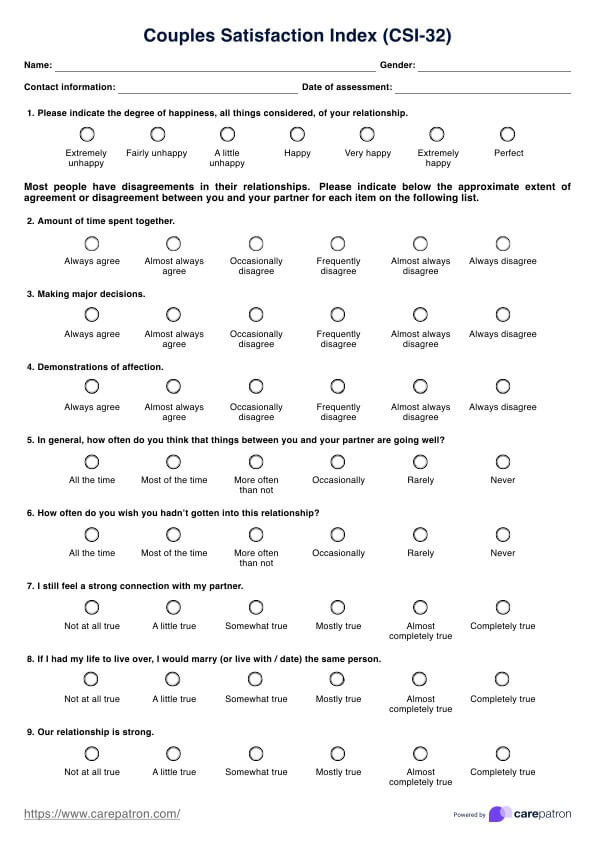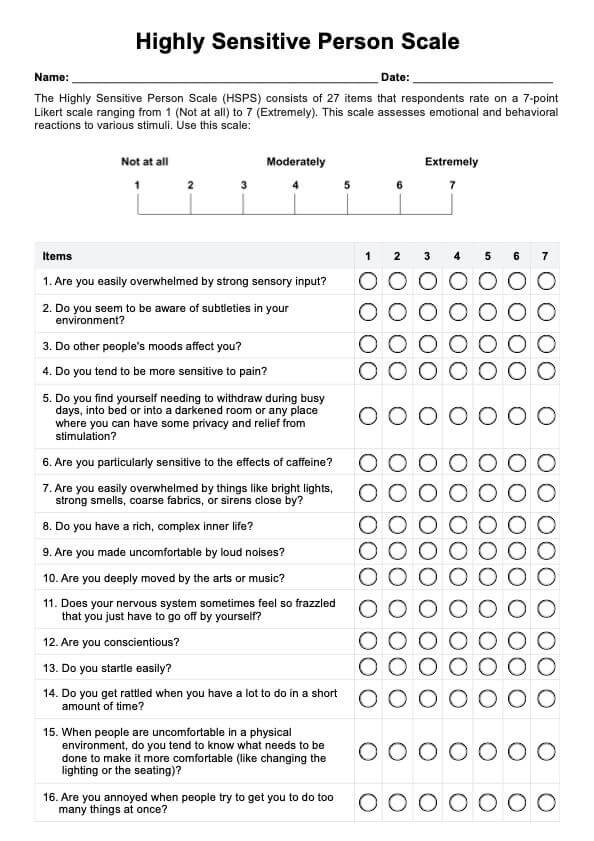Altman Self-rating Mania Scale
Use the Altman Self-rating Mania Scale to gauge the severity of a patient’s mania symptoms.


What is mania?
Before we discuss the , let’s first discuss what mania is, which is what the scale seeks to gauge.
When we speak of mania, we refer to the state in which the person becomes energetic (sometimes too energetic), develops the need to be out and about (so they become active in different ways and levels), and become impulsive (which, in turn, might cause them to make poor decisions). They might also become irritable or prone to becoming irritable at certain times.
Mania is also part of Bipolar Disorder. It is one of the two states that a person with Bipolar Disorder can have, with the other being Depression.
Now, just because a person is highly energetic, impulsive, out and about, and irritable doesn’t mean they necessarily have mania. A person may just be outgoing and irritable. The time that such characteristics become a concern is when they interfere with the person’s life, in the sense that their days, functioning, relationships, and mental well-being are disrupted and negatively impacted.
Suppose you’re handling a patient who has mania or is suspected of having mania, and its symptoms have been negatively affecting them. In that case, it’s best to assess how severe their symptoms are using assessments such as the Altman Self-rating Mania Scale.
Altman Self-rating Mania Scale Template
Altman Self-rating Mania Scale Example
How to use the Altman Self-rating Mania Scale
The Altman Self-rating Mania Scale is a useful assessment tool in the form of a five-item scale. It is a self-rating scale, so professionals who use this tool simply need to hand a copy to their patients for them to answer independently. However, that doesn’t mean that’s the only way to administer the tool.
Another way to administer this scale is for the healthcare professional to conduct it like an interview. They need to mention the five statements for each item and then have the patient pick which one applies to them. This makes the accomplishment of this scale take longer than usual, but this allows the professional to ask the patient to expound on their answers. They might learn things about the patient that can be identified as critical areas of concern or to consider later when diagnosing a patient and making a treatment plan.
Either way, the patient needs to answer the following items:
- Feeling happier and/or cheerful than usual
- Feeling more self-confident than usual
- Sleeping less than usual
- Talking more than usual
- Being active more than usual (socially, sexually, work, home, school, etc.)
They need to answer with one choice out of five preset choices per item. They are usually phrased as such:
- I do not feel happier or more cheerful than usual
- I occasionally feel happier or more cheerful than usual.
- I often feel happier or more cheerful than usual.
- I feel happier or more cheerful than usual most of the time.
- I feel happier or more cheerful than usual all of the time.
For answer choices that have “occasionally” in them, “occasionally” means once or twice. For choices with “often” in them, “often” means several times or more. For choices with “frequently” on it, “frequently” means most of the time.
All answer choices are arranged from 1 to 5 points. After receiving an accomplished scale copy, the professional must add up all scores. They can refer to these ranges and designations to interpret the scores:
- A score of 6 or higher indicates a high probability of a manic or hypomanic condition
- A score of 6 or higher may indicate a need for treatment and/or further diagnostic workup
- A score of 5 or lower is less likely to be associated with significant symptoms of mania
Make sure to cross-check the results with The Diagnostic and Statistical Manual of Mental Disorders criteria for mania.
When is it best to use the Altman Self-rating Mania Scale?
First and foremost, the Altman Self-rating Mania Scale was designed to be a self-assessment tool. Given this, it is in the nature of this tool to be used by non-professionals anytime they feel like it, especially if they feel like they are experiencing symptoms of mania. The only thing that they need to note is to make sure they don’t diagnose themselves with Mania if they score 6 or more.
The Altman Self-rating Mania Scale is not a diagnostic tool. It is a screening tool that helps with the diagnostic process for Mania. So, if you’re not a healthcare professional and you’re reading this, you can download our template and use it for yourself, but make sure that you see a professional so they can look at your results. It’s best to see one so they can diagnose you accordingly (or not if all the testing points show that you don’t have significant symptoms of Mania).
If you’re a healthcare professional, it’s best to use the Altman Self-rating Mania Scale when you have a patient who presents themselves for an appointment to discuss the possibility of Mania. Do note that it would be best to use other assessments and interview the patients to get enough information to cross-check with current version of the Diagnostic and Statistical Manual of Mental Disorders.
What are the benefits of using the Altman Self-rating Mania Scale?
It’s an inexpensive tool to use.
The Altman Self-rating Mania Scale is a nifty scale because it is an inexpensive clinical tool. It doesn’t require any special equipment from anyone. All you need to do is print copies for your practice, or you can just use the PDF file we have and answer it using a computer or capable smartphone. It can also be accomplished in a few minutes because it only has five items so you can get results in a short amount of time.
It can help detect Mania symptoms early.
Let’s stipulate that you’re a non-healthcare professional who stumbled on this scale through this guide. If you are curious if you have Mania or not because you’ve exhibited symptoms that characterize mania, and these symptoms have been going on for a while, then you should definitely use this assessment on yourself. If you score a 6 or higher, we recommend seeing a professional so they can cross-check the results with other assessment results and the criteria for Mania of The Diagnostic and Statistical Manual of Mental Disorders. If all the results match the criteria and you get diagnosed with Mania (or perhaps Bipolar Disorder), a treatment plan can be made to help you manage your symptoms while they’re not yet severe (or to make them less severe).
It can be used as a monitoring tool.
Using the Altman Self-rating Mania Scale doesn’t have to be a one-off thing. The scale can be used as a monitoring tool when a patient has been diagnosed with Mania (or Bipolar Disorder), and a treatment plan was created and implemented for them to follow. During a routine check-up, the scale can be reissued to check for changes in their symptoms. If their scores are lower, that means that their symptoms are becoming milder (however small and slow). If their scores are lower than the first time you used this scale, that means your treatment plan is working. If not, you might want to tackle the symptoms from another angle and adjust your treatment plan.
Commonly asked questions
The scale only has five items, so it’s possible to complete it in two minutes.
No. There are only five items, and the person answering the test only needs to pick one out of five preset answers per item.
No. It’s best to use other assessments so you can cover enough ground and then cross-check all the results and information gathered from conversing with patients with the criteria for Mania found in The Diagnostic and Statistical Manual of Mental Disorders. If you’re a non-professional, it’s best to see a professional so they can assess you further because this scale is not enough on its own to determine if you have Mania or not.


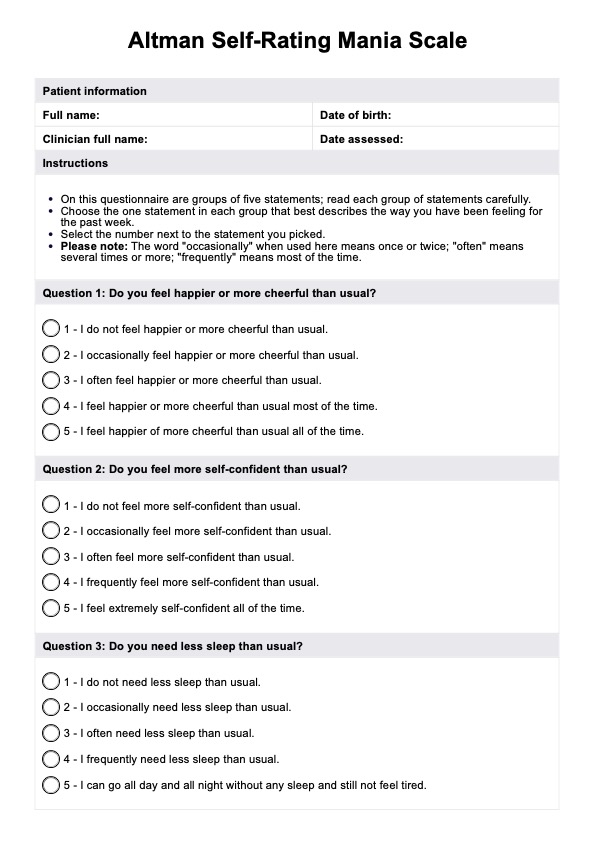
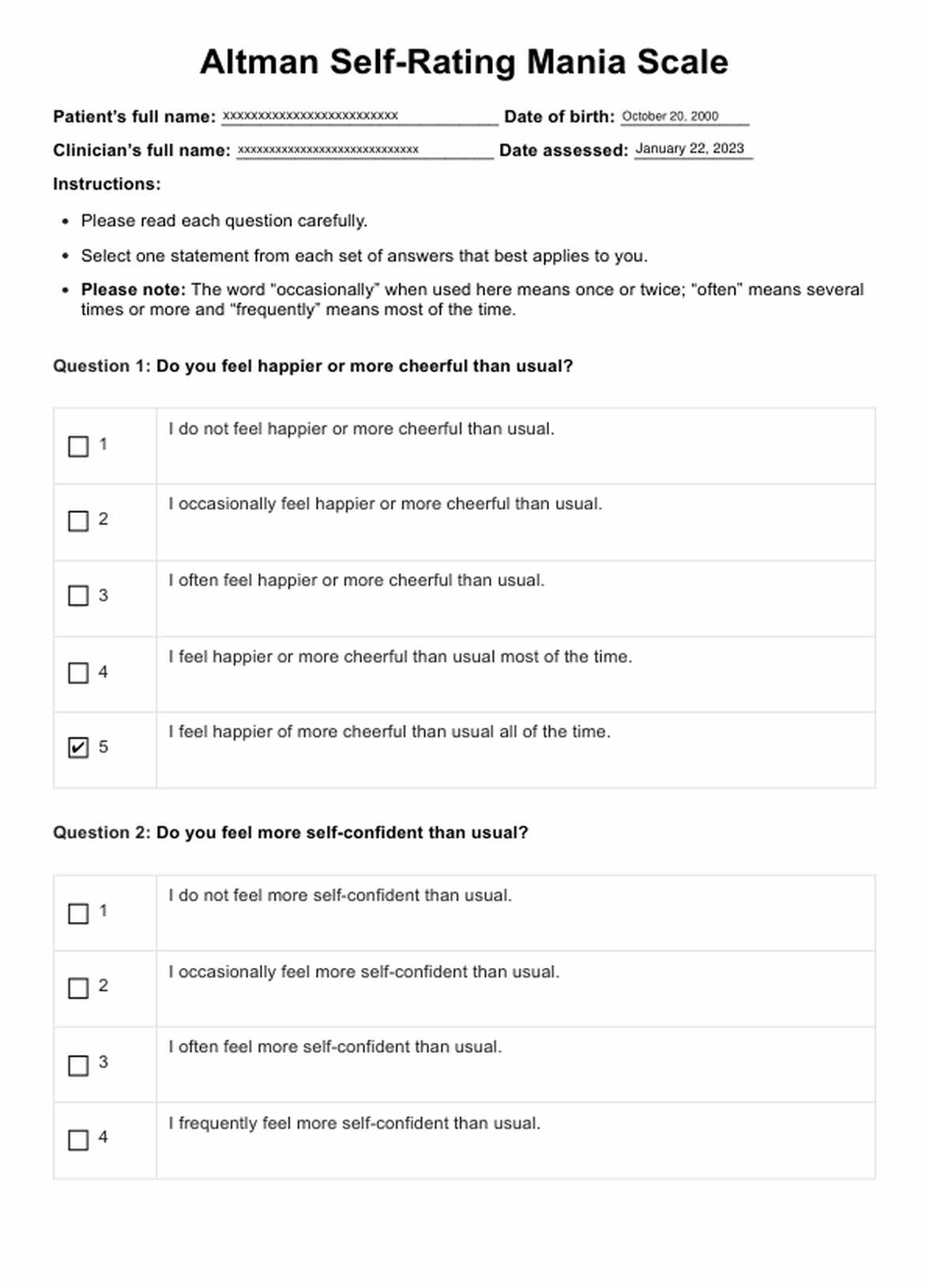

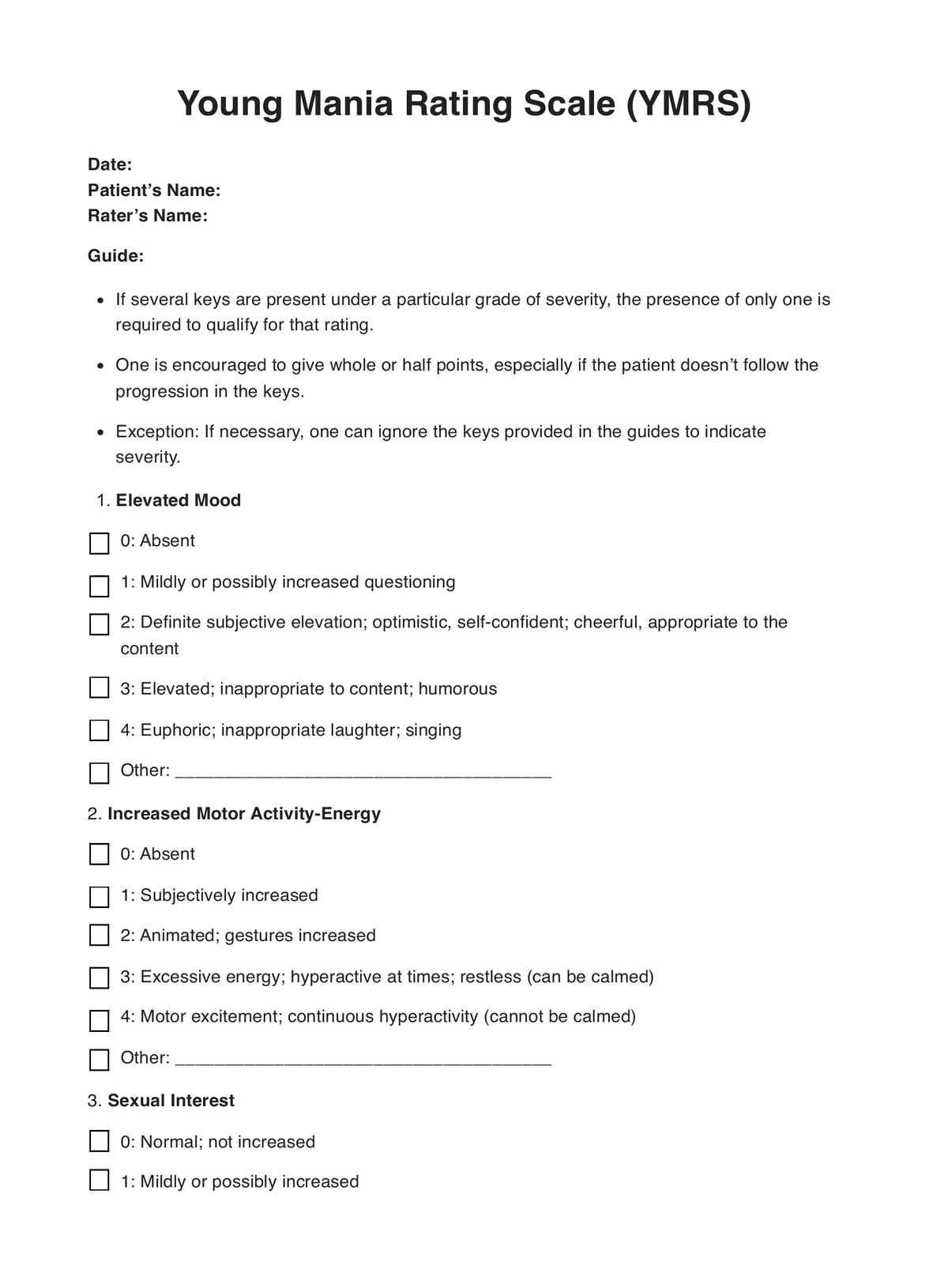

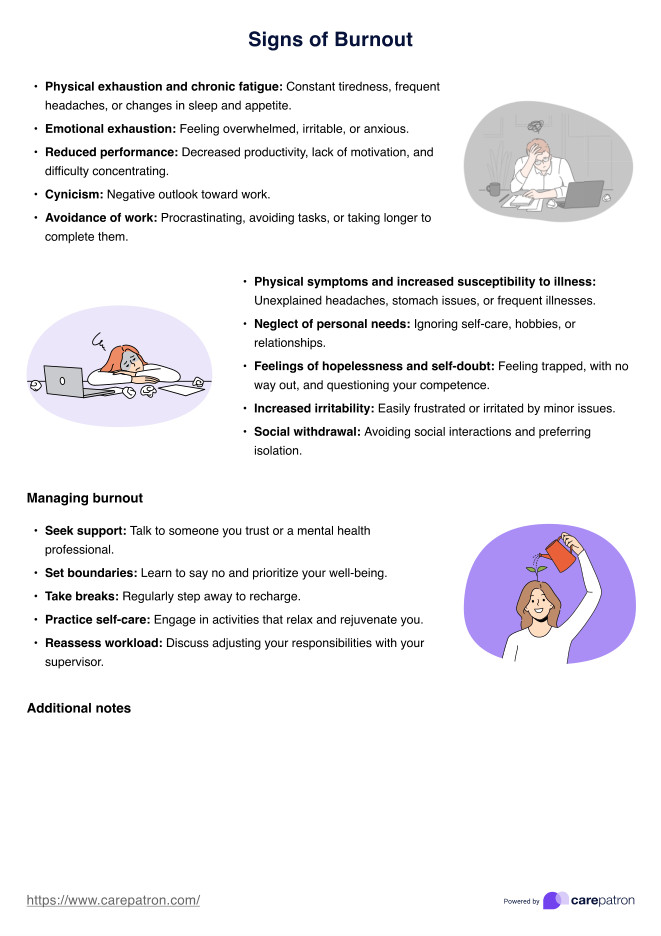
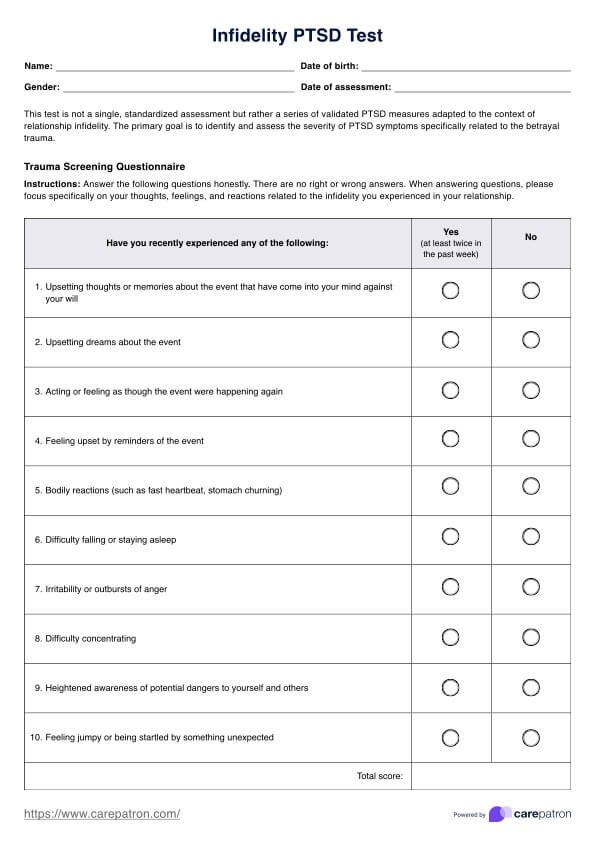









-template.jpg)










































































